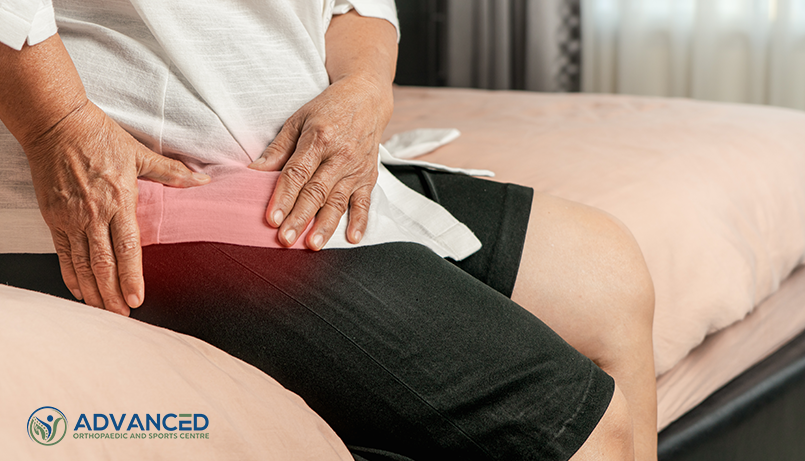Osteoarthritis is a common condition that develops as we age and often occurs in the weight-bearing joints. The hip, which is one of the body’s largest joints, helps you complete everyday activities such as bending over to put on your shoes, and even the simple act of walking.
Despite being a fairly common condition, hip arthritis has no single specific cause and this can be baffling for some as they are not able to pinpoint what exactly caused them to develop the condition.
What we do know is that there are some factors that may put one more at risk of developing hip arthritis but there is no need to worry, as there are effective treatments available that will help you to regain your quality of life.
Read on to find out more.
1. Increasing age
Hip arthritis is sometimes regarded as “wear and tear of the hip” and this explains why increasing age plays a part in developing the condition. Anyone 50 years old and above may be more susceptible, as the cartilage in the hip joint becomes frayed and thinned out over time, allowing the bones in the joint surface to rub against each other.
2. Family history
You are more likely to develop hip arthritis if you have a family history of osteoarthritis. Studies have estimated that 60% of hip arthritis cases may be influenced by genetics. However, it is also worthy to note that not all cases are inherited; it simply means genetics together with other risk factors may play a part.
3. A previous injury
As hip arthritis occurs when the cartilage in the hip joint gets damaged, sustaining an injury to your hip that affects the cartilage may put you at high risk of developing the condition. This is referred to as post-traumatic arthritis, and is usually caused by dislocations or fractures in the hip.
4. Obesity
Everyday activities such as walking and bending already put pressure on your joints. Coupled with the extra stress due to the pounds that you have put on, obesity can increase the loading of your joint cartilage, and your chances of developing hip arthritis.
5. Abnormality of the hip joint
If you were born with an improper formation of the hip joint, a condition known as hip dysplasia, or there are abnormalities in the shape of the bones that form the hip joint, for example, femoroacetabular impingement, you may have a higher risk of developing hip arthritis. These abnormalities affect the normal load distribution across the hip joint during movement, and may predispose to hip labral tears and cartilage damage.
Hip arthritis treatment options in Singapore

While there is no absolute cure for hip arthritis, there are a few different types of conservative and surgical treatments available that will help relieve symptoms and improve your mobility.
Non-surgical treatments
Hip arthritis in the early stages are usually treated with non-surgical methods as they tend to respond well to these treatments:
- Lifestyle modifications – Your orthopaedic surgeon may advise you to cut down on activities that aggravate your condition, such as excessive walking and climbing, high-impact sports that put stress on the hip, and maybe even losing some weight to reduce stress on the hip joint.
- Physical therapy – You may be required to go through physical therapy to help you increase your range of motion and flexibility as well as to strengthen muscles in your hip and leg.
- Assistive devices – Walking supports like canes or crutches may be helpful in improving your mobility and putting less strain on your hip joint.
- Medications – Pain relievers and medications that reduce inflammation may be prescribed to go hand in hand with other non-surgical treatments.
- Hip injections – this can be in the form of hyaluronic acid for viscosupplementation or platelet rich plasma to enhance reparative processes in the joint
Surgical treatments
If your hip arthritis does not respond to conservative treatments or the condition is causing disability, your orthopaedic surgeon may recommend surgery.
There are a few surgical options:
- Total hip arthroplasty – Also referred to as a total hip replacement surgery, this involves removing the damaged hip ball and socket, then replacing them with a prosthesis made of metal with a plastic or ceramic lining to restore the function of your hip. Advances in total hip replacement technology have allowed increased longevity of hip replacements and improved range of motion, allowing patients to greatly enhance their quality of life.
- Hip arthroscopy – This involves a keyhole procedure to repair the damaged labrum and cartilage and to remove the inflamed soft tissue, loose bodies or unstable cartilage flaps. Hip arthroscopy is only beneficial in early cases with mild arthritis for symptom improvement.
Reach out to us today if you suspect that you are suffering from hip arthritis and let our orthopaedic surgeon, Dr Poh, help you enjoy a better quality of life.

